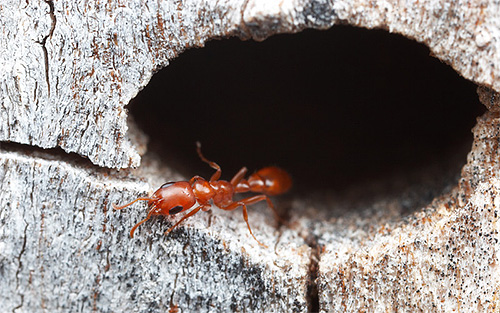
It is impossible to unambiguously answer the question of how long ants live without additional explanations: the life expectancy of ants depends on the species and on which caste each individual belongs to. But on average, entomologists give the following data:
- A worker ant lives from 1 to 3 years. At the same time, in smaller species, the life expectancy of an ant is less than in large ones. And ants living in colder regions also live longer on average than those living in the tropics.
- Male ants live only a few weeks. Their task is to participate in mating. In the future, they are destroyed either by ants from their own anthill, or they die in the clutches of predators.
- The queen ant is the longest-lived member of the colony. In some species, the life expectancy of the uterus can reach up to 20 years - this is 10-15 times longer than the approximate life of a worker ant.
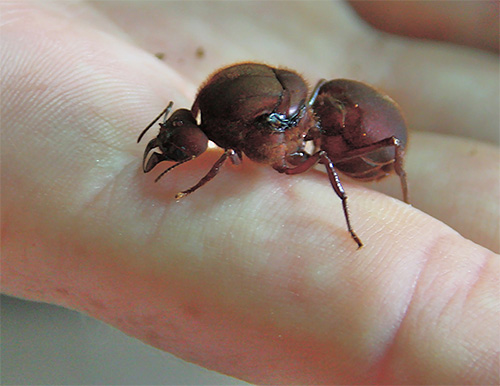
Saying how many years ants live, it is necessary to take into account the fact that some of their species, especially the northern ones, hibernate for the winter. During this period, which for ants in Kolyma or Kamchatka lasts up to 9 months a year, the vital activity of the ant's body practically stops.
Accordingly, three years in this mode is even less than one year in the Amazon jungle in the amount of active life. But in general, when assessing life expectancy, it is necessary to take into account other features of the lifestyle of ants, and the nuances of their biology.
Which ants live longer and which live less
The lifespan of ants depends on several factors and circumstances:
- First of all - from the type of ant. For example, worker pharaoh ants live an average of 2 months, and in bulldog ants, the lifespan of a worker ant can be up to 5 years.
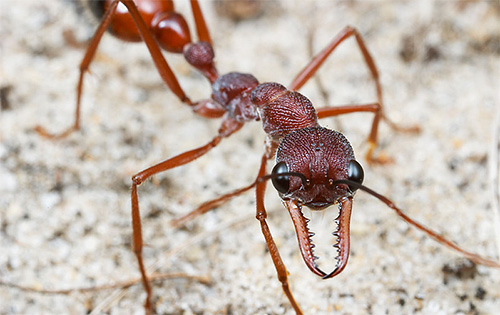
- Caste in an anthill - Soldier ants can generally live longer than those who care for the brood and queen. And the queens themselves always live longer than any worker ant. For example, the recorded record for a carpenter ant queen was 28 years, excluding the larval stage!
- The nature of the work performed. Ants that spend their whole lives in an anthill live longer than foragers and soldiers, even though the latter are “programmed” for a longer life. The point here is that the majority of soldiers and foragers sooner or later become victims of predators and other ants, and die before reaching their physiological limit.
- duration of the larval stage. For example, in ants living beyond the Arctic Circle, due to the very short warm period of the year, the larvae develop for several years, and adult ants live for several more years.
- Temperature regime: the life of ants at relatively low temperatures is longer than that of their counterparts, but living in warmer areas.
Some species of ants that do not have a clear division into castes (for example, black garden ants or the same pharaoh ants) have a certain “career” in the anthill. A newborn ant is first engaged in caring for larvae and eggs, then in arranging an anthill, and at the end of its life, searching for and extracting food.
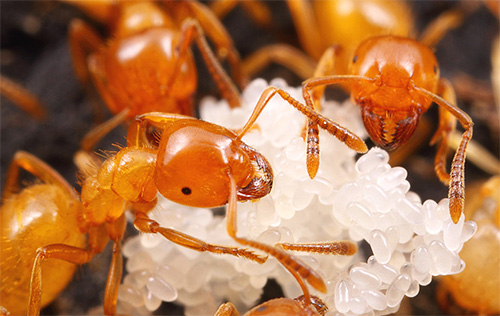
This is very logical - the largest number of viable individuals is always concentrated in the anthill, and due to the high mortality among foragers, the ranks of the latter are replenished only as necessary with "already obsolete" individuals.
Long-lived ants and some records
The longest-lived are large tropical ants, whose life takes place in an anthill. Among them are bulldog ants, in which working individuals can live up to 5 years, and queens - up to 20-22 years.
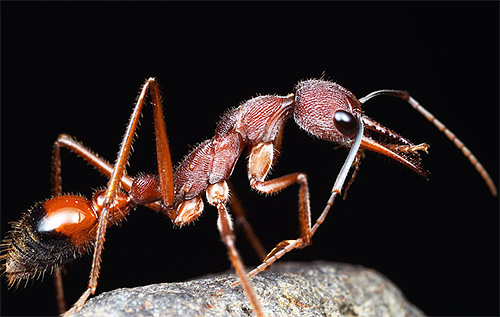
Asian and African army ants live much less, but they are known for their other records. For example, the African black ant queen can be up to 5 cm long, the largest ant in the world, while the Asian roaming ant queen can lay up to 120,000 eggs a day—about 2 eggs every second. Almost no other living creatures on earth can boast of such fertility.

And the shortest-lived are small parasitic ants living off stocks in other people's anthills. The life of working individuals of such ants takes only a few weeks.
How do ants live in an anthill
All ants live in large families with a more or less complex structure.More primitive ants do not have a pronounced division into castes, and each worker can perform different functions. More evolutionarily advanced ants have several castes in each family, representatives of each of which perform strictly defined operations.
It is interesting
For example, leaf-cutting ants in the family have 7 castes that differ from each other in size and appearance. In total, all ants perform 29 different functions.
Families that ants live in can consist of several tens to several million individuals. For example, wandering ants have from 2 to 20 million ants in one family.
A little about how stray ants live can be seen in the video.
Exciting video: hunting nomadic (stray) ants
Almost all ants live in anthills, which they either build on their own or convert various cavities for them in the ground, wood, under stones, or in human housing. The life of ants in an anthill is distinguished by the highest organization and order.

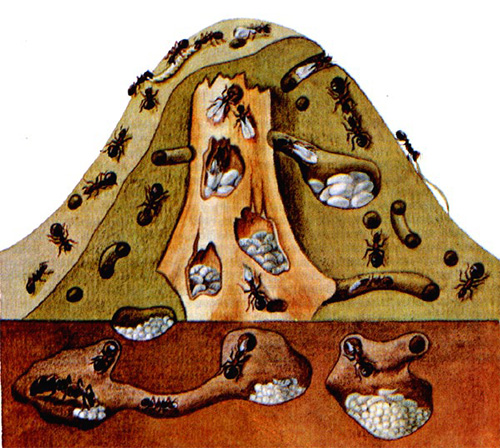
Each member of a large family clearly knows his functions and performs them with the utmost diligence. Communication between insects occurs with the help of chemical signals, and news spreads very quickly here. For example, within a few minutes after the death of the queen, every ant will know about it.
The video clearly shows the life of ants in an anthill arranged in a special glass formicaria:
Video about the life of ants in formicaria - a home anthill
It is interesting
Roaming ants are a well-known exception to the rule. They do not have a permanent anthill, and they constantly roam in search of food lands.At the same time, in the place of temporary deployment, worker ants grapple with each other, capturing the body of a neighbor with their jaws, and form a huge anthill-ball, in which life continues to boil.
Ants live almost all over the world. They are absent only in Greenland, Antarctica and on some oceanic islands. In the same place where ants live, they managed to conquer almost all biotopes, inhabiting the permafrost zone, forests, trees, steppes and even deserts, in which they feed on insects dying from the heat. But regardless of the biotope, the anthill of any ants is a complex structure in which eggs and larvae are kept in optimal microclimate conditions for them.
A little about the life of an anthill in general
Almost every anthill begins with a small burrow or cavity under a stone in which a fertilized female hides. Not eating and not appearing on the surface, she lays her first eggs and feeds her first helpers with special trophic eggs.
And only after the first offspring turn from larvae into adult ants, the female will begin to receive food from them. They will begin to take care of the eggs and expand the anthill.
For many ants, all the debris from the anthill is piled up near the exit, and large piles are formed from it. Such anthills are known in our forests - they can reach a height of 2 m.

The lifestyle of ants living in the northern latitudes implies a long experience of the winter period. In those areas where positive temperatures remain underground, ants do not hibernate, but prepare supplies for the winter, and the anthill continues to live normally throughout the winter.At the same time, the female stops laying eggs, and all exits from the anthill are walled up.
It is interesting
Reaper ants can collect up to 1 kg of grains and seeds in the anthill, which are used by the colony for food during the cold season.
Where the ground freezes, ants can hibernate in a state of hypothermia. They set records here too: Kamchatka ant larvae can cool down to minus 50°C. Of course, during this period, insects do not move, and their internal organs practically do not work.
Usually, once a year, sexual individuals are hatched in the anthill, which simultaneously fly out, swarm, mate, and the females then crawl away in search of new places for anthills. Sometimes a very large family can split up, and part of it goes to a new place to organize a new colony.
In general, ants are an example of altruism and complete self-sacrifice for the benefit of the colony. Each of them is ready to die defending the anthill from the enemy, and each of them works selflessly throughout his short or long life. It is not surprising that ants today are the most numerous insects on Earth, surpassing any other group of arthropods in the number of individuals.


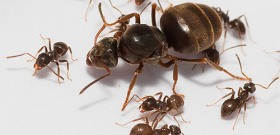

How are ants born?
I think from the larvae.
You seriously don't know?
And on my windowsill lives a hermit ant, as it was described here - a tramp. For about 4 months now.
How many ants are in an anthill? At least order.
1000000
No Don. The uterus lays 400,000 eggs a year.
~500 000
Which ant lives for 7 hours?
Sick
How long can ants live without food but with water?
About 2-2.5 years 🙂
How long do ants live with their usual lifestyle?